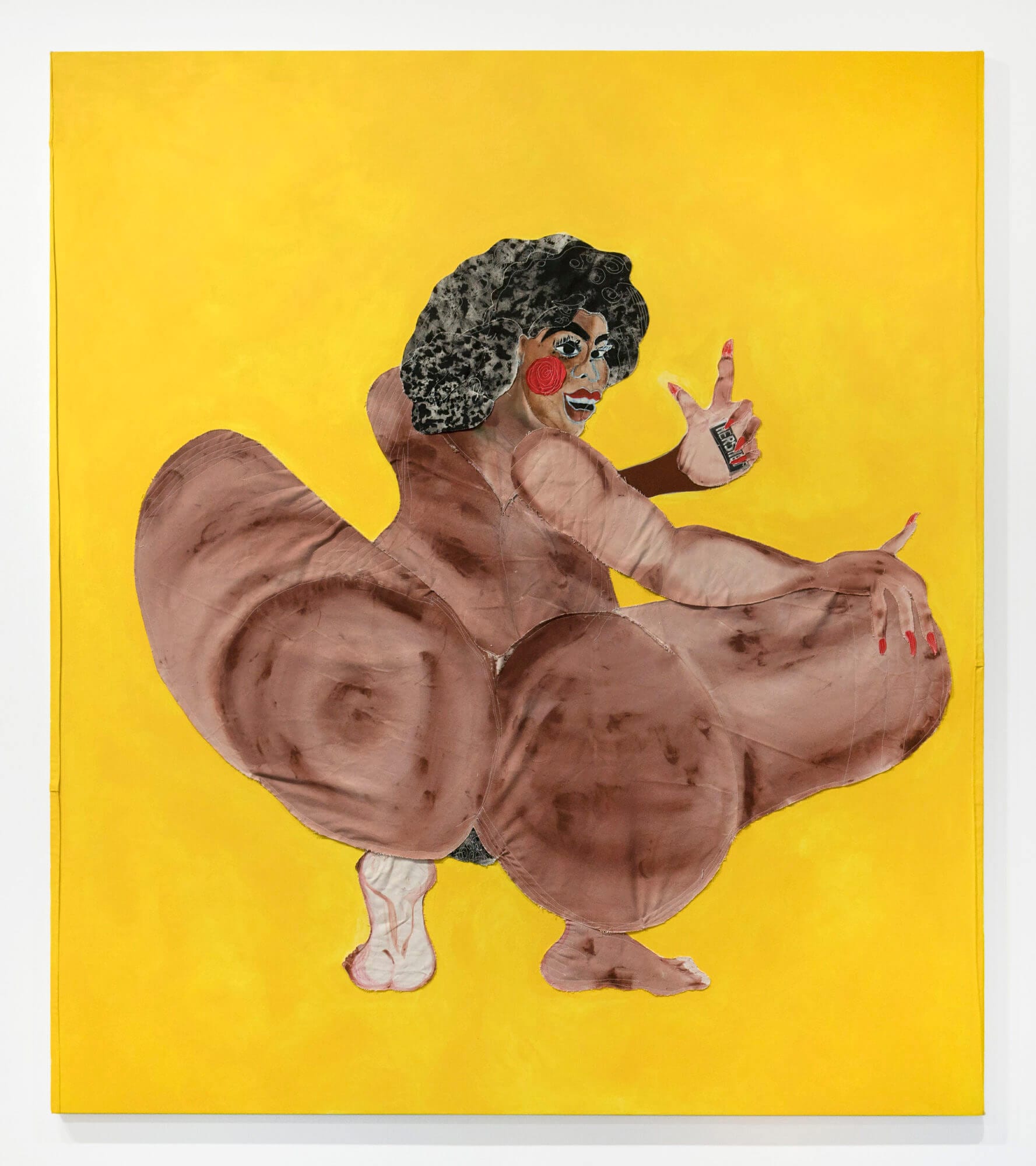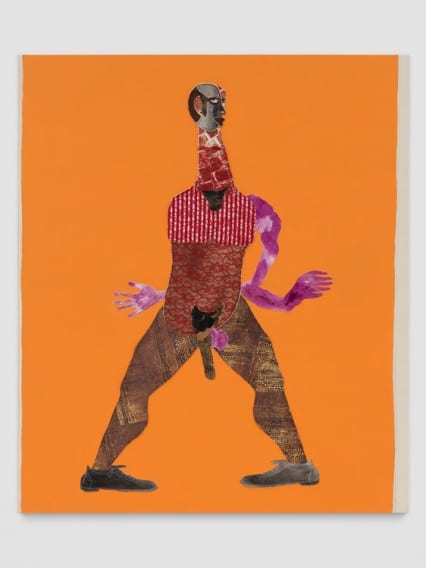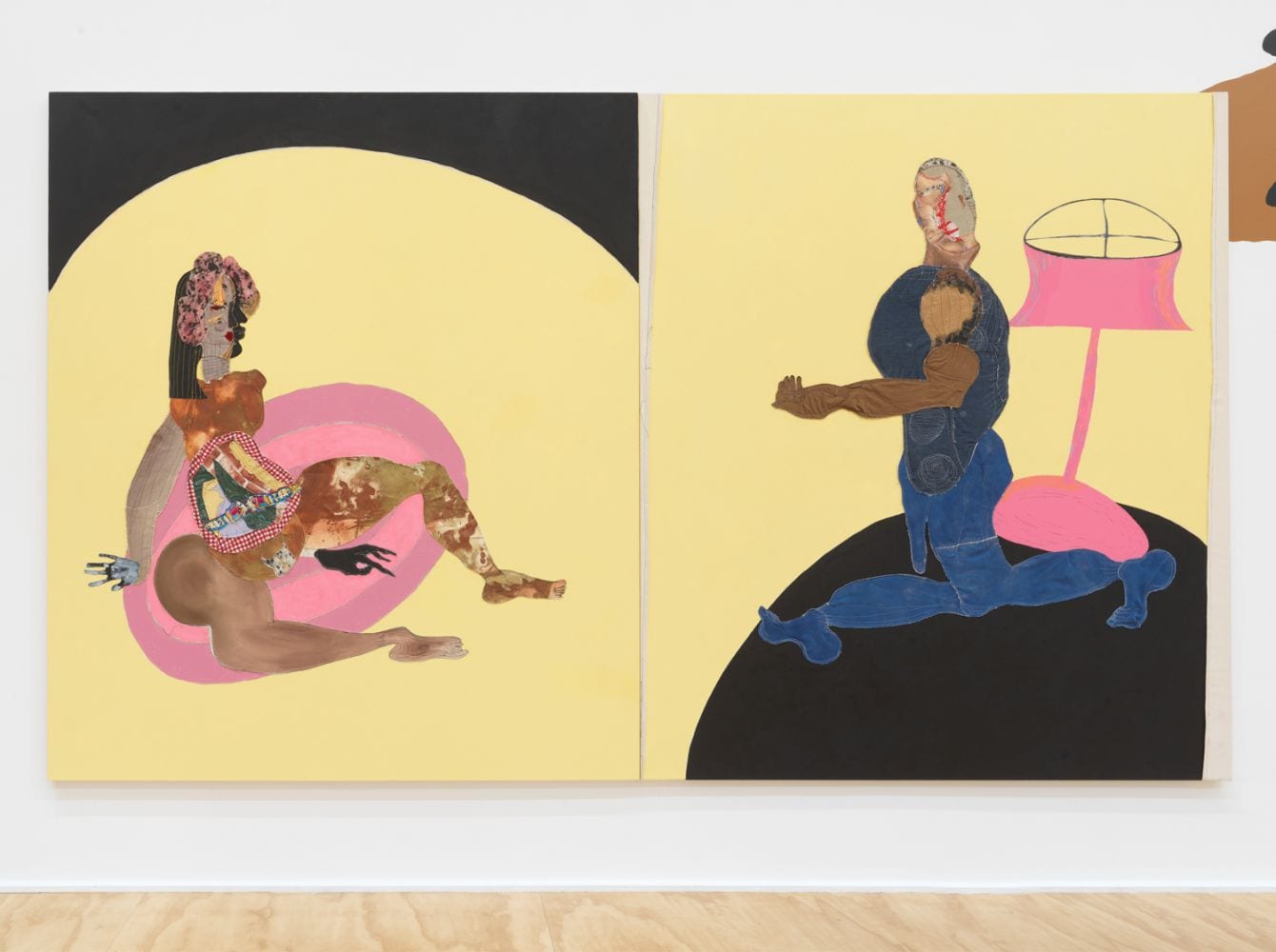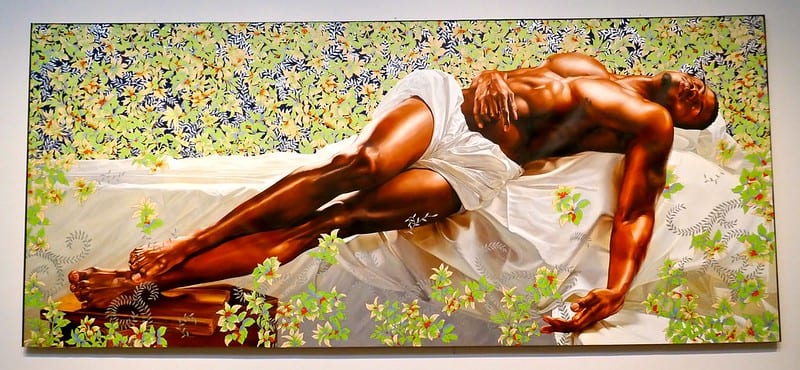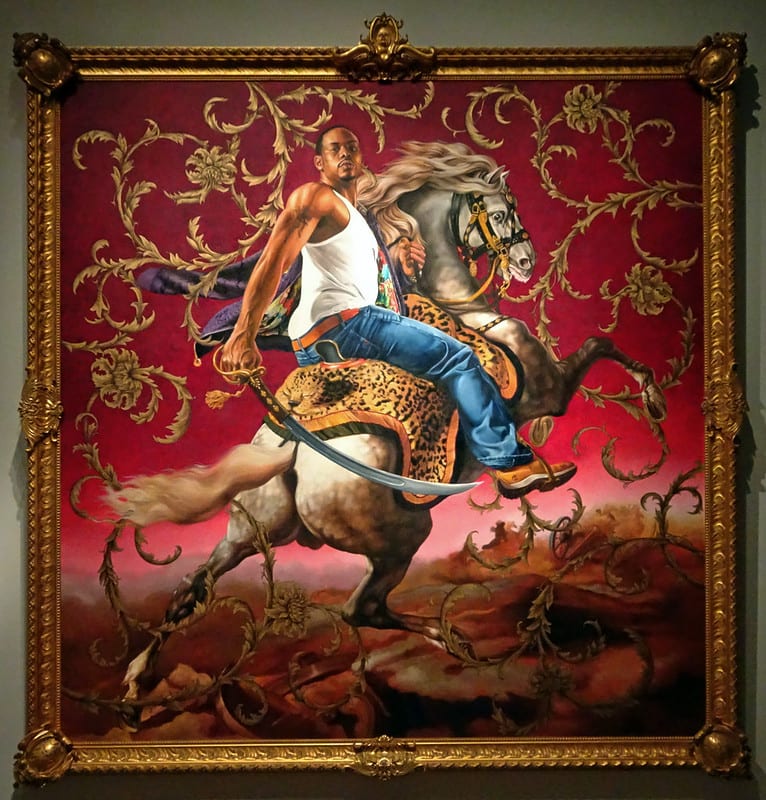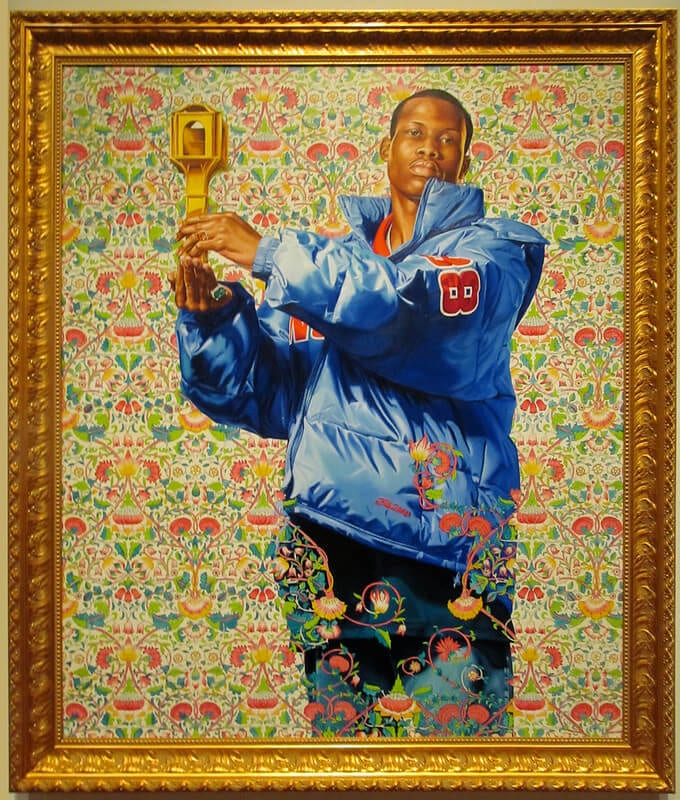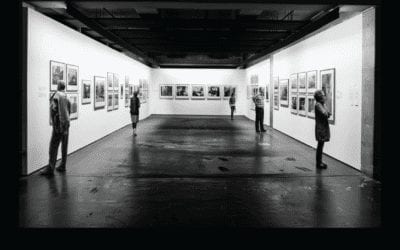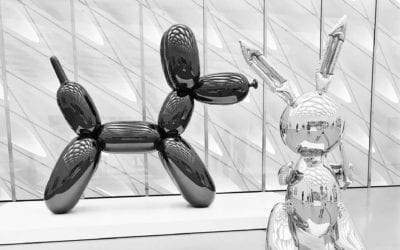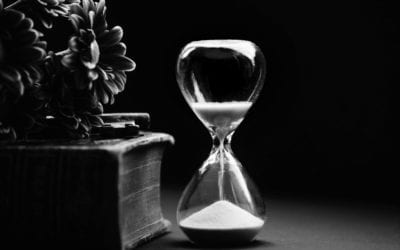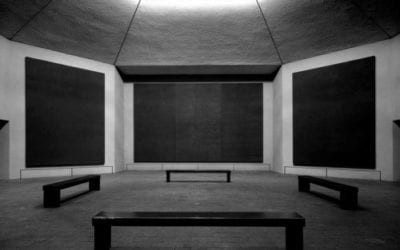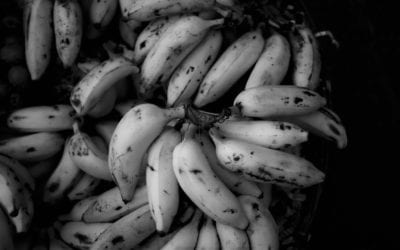How We Meet Black America
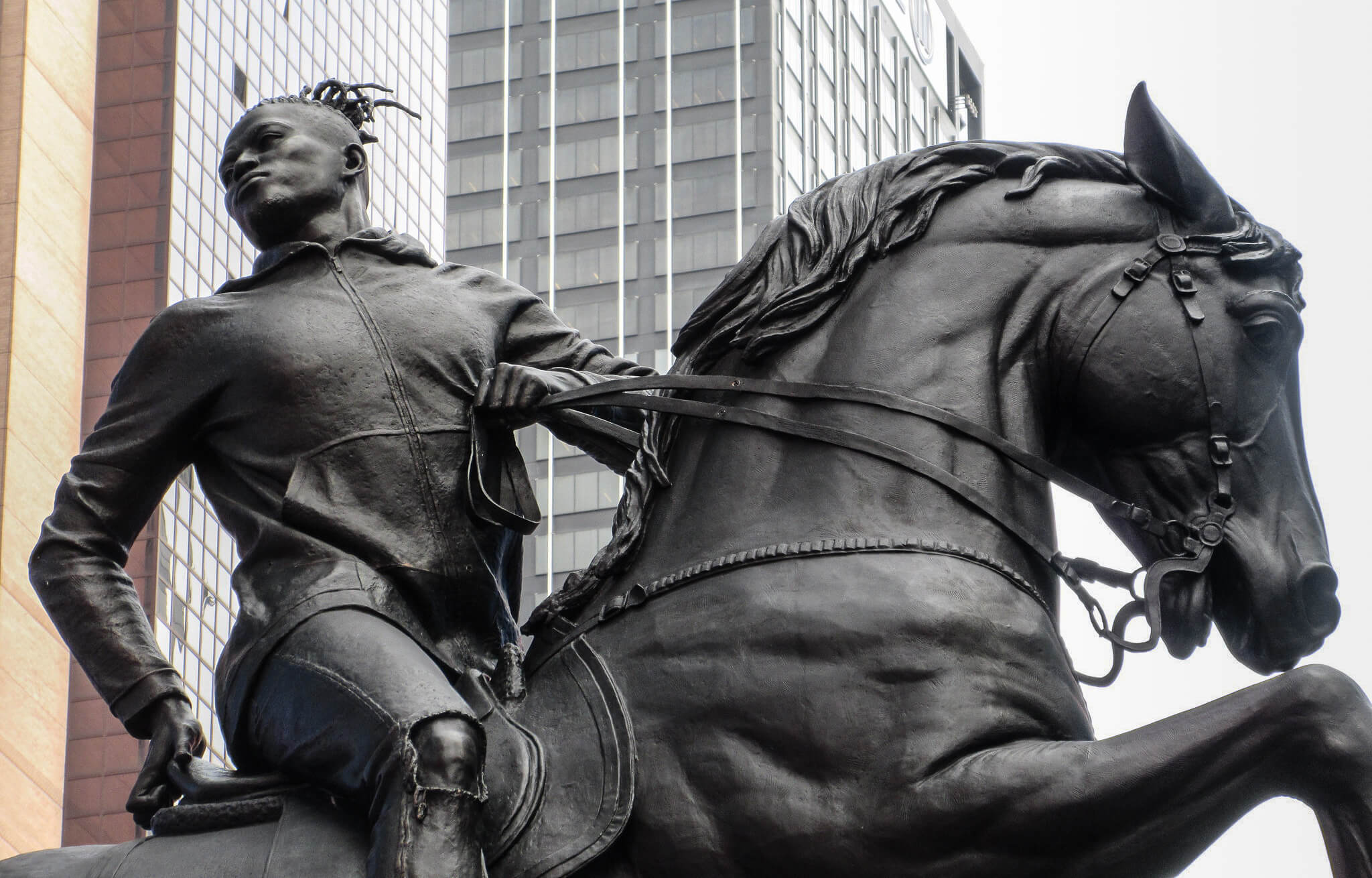
Rumors of War by Kehinde Wiley – Courtesy of Brecht Bug / CC BY-NC-ND 2.0
Have we met before?
In 2020, nearly everyone has an impression of Black America – good, bad, or indifferent. However, 40% of White Americans don’t have a single friend outside their race. The same can be said for 25% of non-White Americans (Reuters/Ispos). Furthermore, we can’t form an accurate impression from one friend. In America, we don’t meet at hello. We meet before. We meet through images and stories. The ones in entertainment, the news, and even canvases.
But, often, depictions of Black America are impressively distorted, divorced from context, or limited to a few typecasts. Moreover, they alter how Black Americans view themselves. Only recently, have false depictions been confronted by provocative truth. And leading the change are artists bringing new styles and perspectives to depictions of Black America.
“The role of the artist is exactly the same as the role of the lover. If I love you, I have to make you conscious of the things you don’t see.” – James Baldwin
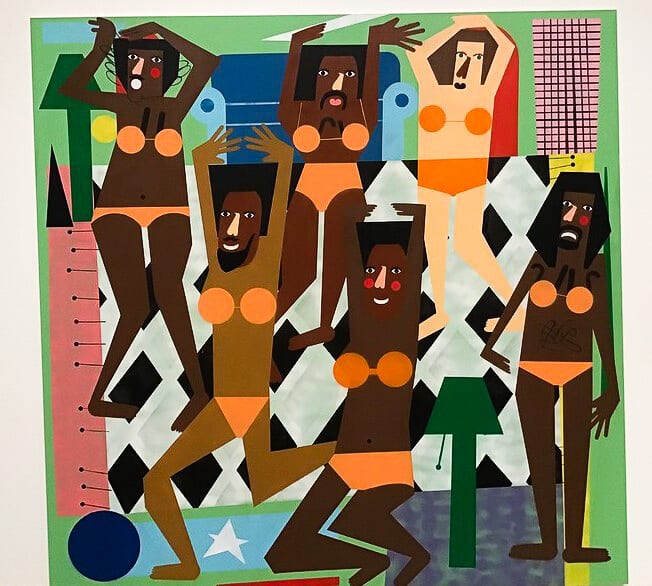
Strut for Noah by Nina Chanel Abney – Courtesy of H2kyaks / CC BY-NC 2.0
It’s welcoming.
Abney reimagines Black America with simple shapes, bright colors, and playful symbols. They’re painted on large canvases and resemble murals. Her style is light, cheerful, welcoming, and allows us to see Black America in a different light.
It’s relevant.
Great murals reflect their time. And Abney’s work reflects contemporary Black America. At times, it questions the criminalization and sexualization of Black people. Sometimes, it questions their relationship with religion and American nationalism. Furthermore, she uses characters and symbols to indirectly give context and meaning to the scenes. Her work lures us in with bright colors and sits us down for serious conversations.
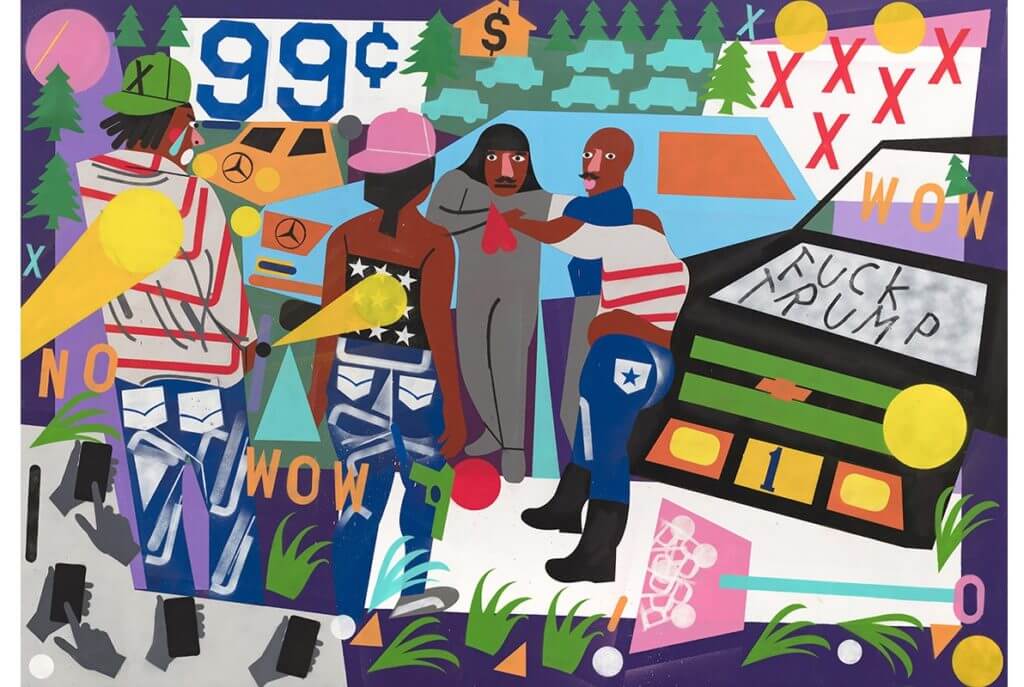
Penny Dreadful by Nina Chanel Abney – Courtesy of Jack Shainman Gallery / 17 USC Section 107
They’re one people.
Gender fluidity is critical to Abney’s recent work. Characters are collages of body parts and cliché gender norms. A character may have a dark masculine face, breasts, pale hands, and pink pants. Her work says, “Regardless of gender, we are one Black people.”
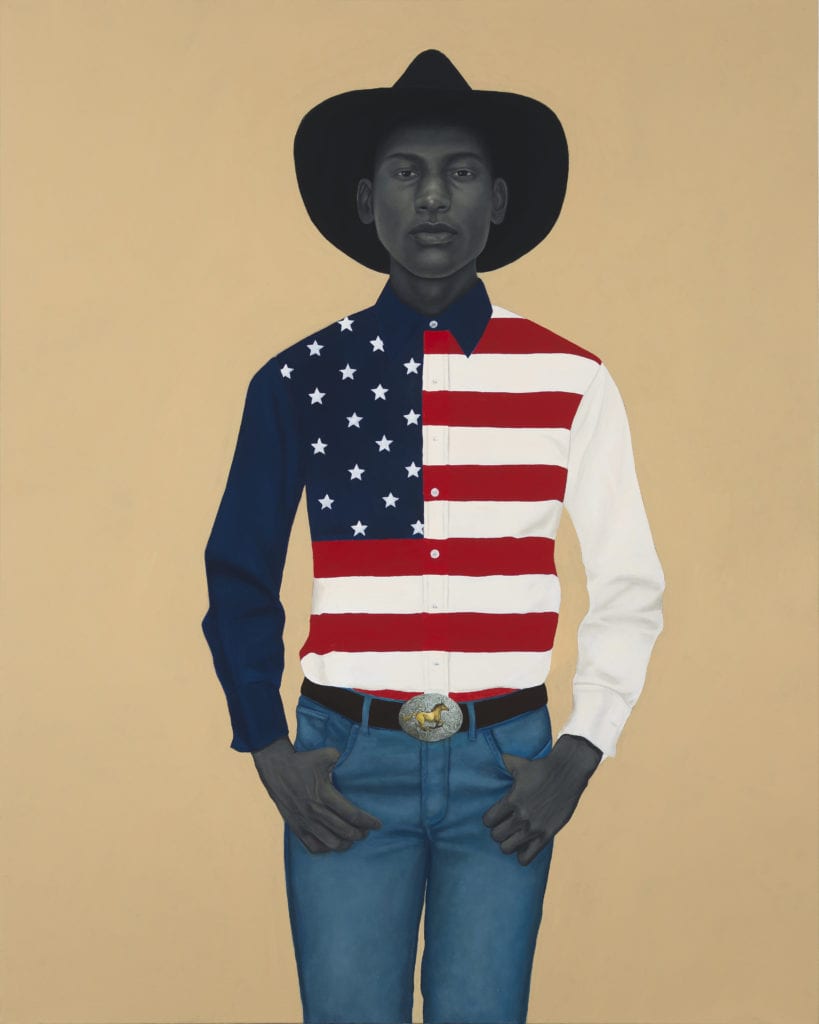
What’s precious inside of him does not care to be known by the mind in ways that diminish its presence by Amy Sherald – Courtesy of Amy Sherald/Monique Meloche Gallery / 17 USC Section 107
It captures the spirit.
Good portraits capture our likeness. Great portraits capture our spirits, and that is Sherald’s signature. Yet she doesn’t capture it with details. Her style is not photo realistic. It’s smooth and elegant. Still, the subject’s spirit lives on in nuanced expressions and subtle postures.
They’re individuals.
Sherald’s subjects feel like they’ve never met. Like, they live in their own world. The feeling comes from the range of diverse subjects and backgrounds. Sherald’s subjects come from across Black America. They span age, size, and status. And they stand in a world of their own saturated colors and patterns. They’re individuals, not typecasts.
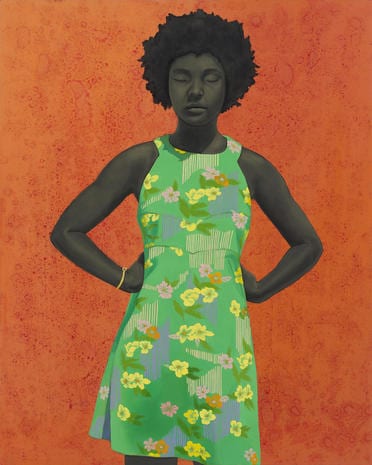
The Make Believer (Monet’s Garden) by Amy Sherald – Courtesy of Amy Sherald/Monique Meloche Gallery / 17 USC Section 107.
They’re a collective.
Her subjects have never met. But they feel connected or even related. That connection is skin tone. Sherald substitutes Black America’s many colors for similar shades of grey. They aren’t isolated strangers. They’re a collection of individuals.
They’re proud.
Each subject has a distinct facial expression. But each expression has a consistent mixture of solitude, pride, and individuality. They have a distinct sense of self. Their Blackness isn’t measured in cliches. They’re proud to be different. They’re proud to be Black.
Milk Chocolate by Tschabalala Self – Courtesy of Thierry Goldberg Gallery. Photo: Zachary Balber / 17 USC Section 107.
It’s cliches + sexualization.
Self’s work focuses on the clichés of Black bodies and their history of hypersexualization. From oversized butts and lips to big penises and shoulders, every cliché is larger than life. She shoves these exaggerations in our faces often with provocative poses. It forces us to acknowledge the sexual lens we apply to Black America.
It’s uncomfortable.
Great art makes you feel. And it isn’t always pretty. Self’s work is intentionally jarring and uncomfortable. Her figures are a collage of colors, patterns, shapes, and sizes. Limbs connect and contort in unnatural ways. They make us uncomfortable using the bodies we sexualize.
From Left to Right: Snake | Carpet by Tschabalala Self – Courtesy the artist and Galerie Eva Presenhuber / 17 USC Section 107.
It’s exciting.
Safe is boring. And Self’s work is far from it. Her decision to depart far from reality allows for immense freedom to create a diverse, powerful, and distinct style. In short, it’s an exciting body of work.
Sleep by Kehinde Wiley – Courtesy of Ali Eminov / CC BY-NC 2.0
We met before.
Wiley presents the Black typecasts we know and activates our biases. His subjects are the real Black Americans behind theses typecasts in photo realistic portraits.
It questions us.
Wiley’s work activates, leverages, and finally challenges our biases. His work presents subjects in classical, dignified, and traditionally White settings and postures. And his male subjects regularly step outside the clichés of gender. Still, they don’t seem to fit. As we wonder why, we question our unconscious biases.
Left to Right: Officer of the Hussars | Mary Comforter of the Afflicted | St. Dionysius – Courtesy of Maia C. CC BY-NC-ND 2.0 | FaceMe Pls CC BY 2.0 | Rocor CC BY-NC 2.0
It frees our mind.
Where we see people guides how we see them. It enforces or challenges our perceptions. Wiley’s signature backgrounds are decorative, floral, and colorful. They lift subjects from reality, loosen us from bias, and free our minds.
Until Victory is Won
Battling false depictions with imagery isn’t perfect. It doesn’t beat saying hello, shaking hands, or sharing a laugh. But, realistically, every person will never have a Black friend. And every Black boy will never meet all the men he can become. So we must use imagery to fill the gap. We must continue filling America’s canvases with thoughts never heard and realities never seen. We must continue – until victory is won.
As I can,
ss
The Psychology of Interpretation
The Psychology of InterpretationSpace Program: Mars by Tom Sachs - Courtesy of Dave Pinter / CC BY-NC-ND 2.0Reliving Our PastAround 1917, psychologist Frederic Bartlett asked a group of participants to read and recite an unusual folk story, The War of the Ghosts...
Retail vs. Fine Art: Do We Know the Difference?
Retail vs. Fine Art: Do We Know the Difference?Butterfly Knight by Oliver GalSelling vs. CreatingThe greatest separator between retail and fine art is philosophy. Retail art believes in selling. It’s for the newcomer looking for something beautiful. It wants to be...
Jeff Koons Top 5: $245 Million in Art
Jeff Koons Top 5: $245 Million In Art“What I think is really wonderful about childhood is that kids are really open to everything. Children love things for just what they are. Blue is beautiful for blue. Pink is beautiful for pink.” – Jeff Koons5) Popeye -...
Timeless Design: Reviewing Impulses by Dennis Dodson
Timeless Design: Reviewing Impulses by Dennis DodsonWhen a piece calls you, you know it. In 2016, while venturing through a labyrinth of 2,000+ pieces, one called me. Today, Impulses by Dennis Dodson towers over the rest of my collection. It’s intense yet subtle,...
12 Steps to Appreciating Art
12 Steps to Appreciating ArtUntitled No. 11, 1963 by Mark Rothko – Image Courtesy of Flickr / CC BY-NC-ND 2.0The Power of OpinionThe key to balancing subjectivity and judgment is our opinion. Opinions are interesting. They are unique to each of us yet we always have a...
Why No One Understands Abstract Art
Why No One Understands Abstract ArtSvanen (The Swan) No. 17 by Hilma Af Klint - Licensing (PD-old-75)Lost In the AbstractThe wilderness of abstract art is strange. Its colorful branches are incredibly unique yet strikingly similar – leaving us lost in the abstract....
Why A Banana is Worth $120K
Why a Banana is Worth $120KWhat’s special about Comedian?The banana’s name is Comedian. Don’t think of Comedian as a banana. Think about it as a comedian at a Sunday open mic. Every joke is about wealth inequality. And we’re all a part of it. Cattelan knew the...
